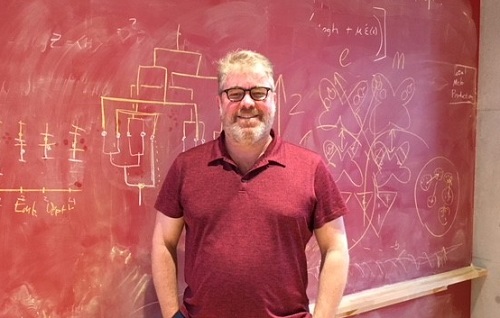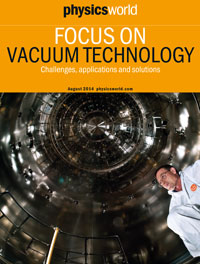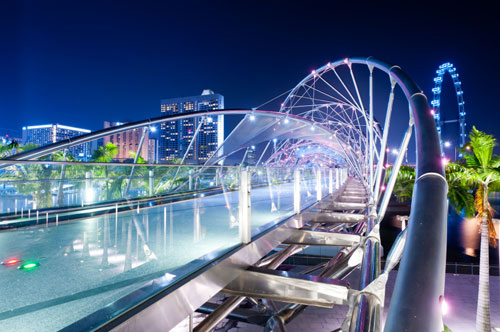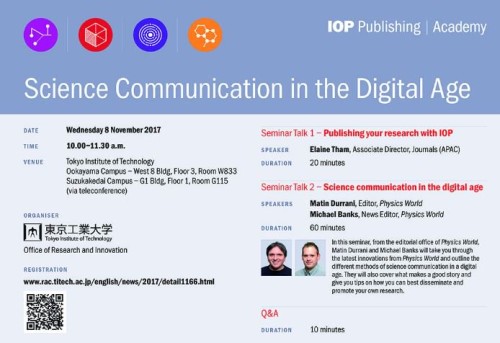Tag archives: research
Reforming Japanese science

Making changes: John Hernlund.
By Michael Banks in Tokyo, Japan
Following this morning’s talk at the Tokyo Institute of Technology (as well as a mock earthquake evacuation drill that took place just afterwards), I took the opportunity to visit the Earth-Life Science Institute (ELSI), which is located in a neighbouring building at Tokyo Tech.
Like the Kavli Institute for the Physics and Mathematics of the Universe (IPMU), which I visited yesterday, ELSI is part of the World Premier International Research Center Initiative (WPI).
ELSI began in 2012 and has funding for 10 years from the WPI. There are around 100 people working there, the majority of whom are from outside Japan. Its main aim is to understand how life began on Earth and how that can be applied to the search for life on other planets. It covers a range of disciplines from astrophysics to microbiology.
View all posts by this author | View this author's profile
How to get your paper noticed
By Matin Durrani in Tokyo, Japan
For physicists, doing research is only the start of the game. With thousands of papers published each year, how do you make sure your latest work stands out from the crowd?
If you’re an established academic, your peers will already know who you are and, provided you can continue getting your papers published in the top journals, your career will carry on hitting the high notes . But if you’re less experienced in the research game, then a good dose of publicity in the mainstream media can give you a great head start – and thankfully the online world can help hugely.
That was the message of a seminar “Science communication in the digital age” given today at Tokyo Institute of Technology by me and my IOP Publishing colleagues Michael Banks (Physics World news editor) and Elaine Tham (associate director for Asia-Pacific). Attended by about 40 students, science communicators and university administrators, the seminar was opened by the president of Tokyo Tech Yoshinao Mishima.
View all posts by this author | View this author's profile
American angst

Danger ahead – Donald Trump’s election as US president will not be business as usual for science policy. (Courtesy: iStock/uschools)
By Matin Durrani
Like many people, I’m fearful of the imminent Donald Trump presidency, given the many sexist, racist and otherwise unpleasant remarks he made during the US election campaign. However, his slogan – “Make America great again” – proved powerfully effective for many voters. Who, after all, could disagree with renewed domestic glory? Sadly, Trump’s plans for achieving that goal – what little we know of them – are based on such ill-informed and ignorant views that he could damage America’s long-standing leadership in many areas, including science.
View all posts by this author | View this author's profile
Taking a peek inside the UK’s National Graphene Institute

Look, no dust – National Graphene Institute architect Tony Ling showing off the PVC blackboards (Courtesy: Physics World/James Dacey)
By Matin Durrani in Manchester
Do an Internet image search of the word “physicist” and you’ll come across countless pictures of physicists posing in front of blackboards covered with bewildering looking equations. That’s because blackboards are traditionally a common sight in physics labs and research centres – in fact, they’re everywhere at the Perimeter Institute for Theoretical Physics, where my Physics World colleagues Hamish Johnston and Louise Mayor are right now.
But over at the UK’s new £61m National Graphene Insitute (NGI), which I toured earlier today, blackboards are very much verboten. It’s the chalk dust you see, which is a no-no for health-and-safety bosses at the University of Manchester, where the NGI is located. Incidentally, Manchester is also currently home to Andre Geim and Kostya Novoselov, who shared the 2010 Nobel Prize for Physics for isolating graphene for the first time.
View all posts by this author | View this author's profile
Scotland’s future

Scotland: staying in the UK following the referendum. (CC BY-SA 2.0/Jack Torcello)
By Matin Durrani
In the end, it was perhaps not too unexpected when Scotland voted against independence in yesterday’s referendum. Almost all of the polls in the run-up to the vote had signalled a win for the “no” camp – and so it turned out, with 55% of voters wanting Scotland to remain tied to England, Wales and Northern Ireland as part of the UK. But it was a relatively close-run affair and many will be relieved that the two sides have avoided having tospend the next few years arguing, like a divorcing couple, over how to divide their spoils.
View all posts by this author | View this author's profile
Physics World 2014 Focus on Vacuum Technology is out now
By Matin Durrani
Vacuum technology is big business these days, with companies in the sector producing advanced scientific equipment that is vital not only for academic research, but also for manufacturers in other industrial sectors.

In fact, one giant of the vacuum industry – Swedish firm Atlas Copco – bought its UK rival Edwards Vacuum for an eye-watering $1.5bn last year.
If you want to find out more about why Atlas Copco forked out so much cash, don’t miss the latest Physics World focus issue on vacuum technology, which includes an interview with Geert Follens, president of Atlas Copco’s newly created vacuum-solutions division. In the interview, Follens discusses the takeover in more detail and explains why he expects further strong growth in the vacuum market.
Elsewhere in the issue, you can read about a European Union project uniting academia and industry to improve vacuum metrology for production environments. Such efforts are vital even in the drinks industry, where the Van Pur brewery in Poland, for example, uses equipment from KHS Plasmax to coat the inside of bottles with an ultrathin layer of glass using plasma impulse chemical vapour deposition under vacuum.
View all posts by this author | View this author's profile
Do “real scientists” take research trips instead of holidays?
By Margaret Harris

Getting away from research for a while on a beach. (iStockphoto/David Franklin)
I’ve just started reading Letters to a Young Scientist, a new book by the eminent biologist Edward O Wilson. I picked it up as a possible subject for Physics World’s Between the Lines column of short book reviews because while Wilson is definitely not a physicist – he made his name studying the social systems of ant colonies – his book is written for scientists in all disciplines.
I haven’t finished it yet, but one bit of advice from the chapter “What it takes” grabbed my attention. After stating that academic scientists should expect to work 60-hour weeks, Wilson drops the real bombshell. “Real scientists do not take vacations,” he writes. “They take field trips or temporary research fellowships in other institutions.”
View all posts by this author | View this author's profile
Research galore in Singapore
By James Dacey

The Helix Bridge in Singapore. (Courtesy: iStockphoto/TommL)
Despite its modest size, the city-state of Singapore is clearly an ambitious nation, boasting a leading financial centre and one of the world’s busiest ports. During a recent visit to Boston I met a man called Lim Tze Min who works for a government agency called Contact Singapore, which exists to try and attract skilled people to live and work in Singapore. I wanted to know why a physicist might consider relocating to the country. Listen to our conversation here.
Tze Min talks about research facilities including the Centre for Quantum Technologies (CQT), the founding director of which is the Polish-born physicist Artur Ekert, who is also affiliated with the University of Oxford in the UK. According to Tze Min, one of the major bonuses of being a researcher in Singapore is the small amount of bureaucracy invovled, which allows scientists to get on with just doing the science. Give it a listen and decide for yourself whether it sounds like a place where you could imagine yourself working.
View all posts by this author | View this author's profile
